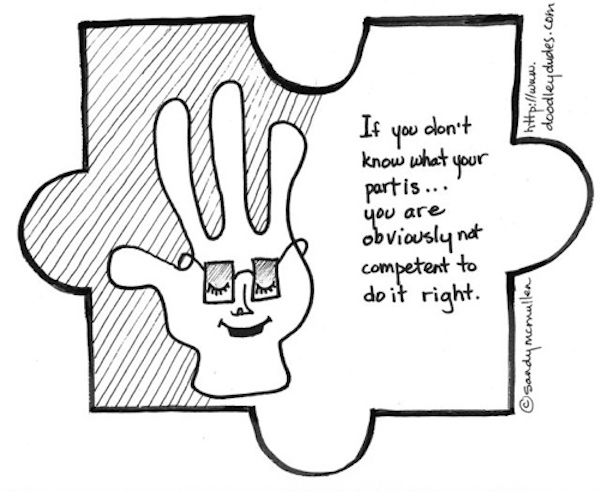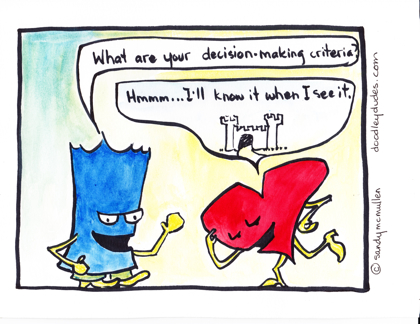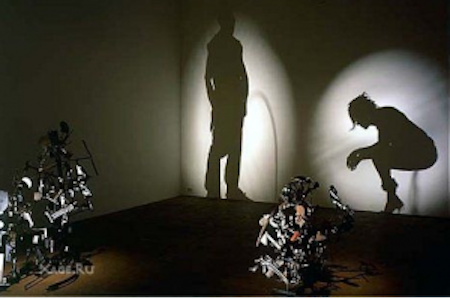
by Sandy | Feb 23, 2018 | MBTI Facts
This MBTI based cartoon is based on a direct quote from an ISTJ. I love the word “obviously” smack in the middle of this summation. I can imagine someone who knows what their place is in the organizational structure and abides by all of the spoken and unspoken traditions that accompany the org chart. Efficient, orderly, organized and a strong dose of being realistic. The job at hand gets done – fun, frivolity and spontaneity may not be in the job description here.

by Sandy | Feb 21, 2018 | MBTI Facts
Palliative care takes a special kind of person. Imagine stepping into this role with someone in your social circle.
Recently I spoke with a woman who commented that she had just come from the last visit with a woman who she had been caring for for the last 6 months. That wasn’t her career and she hadn’t even started out as a best friend, but here she was saying goodbye to someone important in her life.
Granted she had skills that allowed her to do this work as a caregiver. She had been a nurse and is a trained coach working in the education system with families. However what was amazing to me was the combination of practicality and compassion that went hand in hand in her approach.
Understandably the family of the woman who was dying were in a state of confusion and denial. Part of what this ESFJ offered to them was being able to see through the overwhelm to know what needed to be done not only in the moment but for the next steps. The suggestions she made provided organized, well thought through information with concrete steps that were easily achievable. The family came to trust her open and compassionate guidance. Plus it gave them something to do to feel somewhat in control.
ESFJ’s supply warmth and are a steadying influence. They work well in systems and/or teams as they create collaborative environments where the practical needs of all concerned are top of mind.
What was most evident to me was the value in the simple act of daily conversation. These two women talked from the heart about what was wanting to be said…no holding back…no being afraid to go to all of the scary places.
Perhaps other types can also bring this level of heart and hand but this ESFJ has my vote for getting her angel wings.

by Sandy | Feb 20, 2018 | Reiss Motivation Profile
Let’s suppose that you were told that Vengeance was one of your motivators. People often frame this in a more personal way as “I am vengeful.” Would you have a reaction to this in your profile?
When you are working with personality assessments, you need to make sure that everyone understands the meaning of the terminology being used in a particular circumstance. As a general rule the terms used to describe personality types or traits are neutral and imply no preferred value.
According to the Reiss Motivation Profile Vengeance is the desire to get even with others, the need to strike back. Aggression in animals is an example of the evolutionary basis of vengeance. The emotions associated with vengeance are anger and hate. At a primal level high desire for vengeance is and “eye for an eye” view of life. Another way of looking at this is that these high vengeance people believe that “it’s up to you” and the best way to do things is to simply take charge and get things done. A word that could also be used to describe vengeance that is more palatable is competitive. This motivation can propel sports teams to victory or turn around a failing organization. However, we all know people who love to argue just for the sake of it. There is pleasure for them in pushing back, sparring and defending their position. They love to prove other people wrong. On the downside this is the territory of dictators and despots.
On the other side of the scale, at the low end of the scale, people who score low in “Vengeance” are agreeable and will turn the other cheek. There are some people who wouldn’t strike back even if their life was in danger. This type of person may find that others take advantage of them.
These traits do not go away. If we don’t find a positive, constructive way to get these needs met they will raise their heads in possibly ugly ways. Rather than judging a desire such as “Vengeance” as negative or troublesome design a way to to get this need met such as regular athletic competition. If this is a trait you recognize in others, can you see the positive contribution?
As a sidebar: This painting was part of a show of paintings that I did based on the Reiss. A man came into the gallery and as he was reading the list of 16 core motivators on the Reiss profile, he came to argue with me about Vengeance. He said that he didn’t believe in it as it wasn’t necessary. If anyone got in his way he just “dealt” with them. As he turned to see the artwork hanging in the show, this painting caught his eye and without knowing that it that represented “Vengeance”, he told me that he liked THIS one.
Each letter is made from quotes that capture the energy of “Vengeance” such as “If you aren’t the lead dog the scenery never changes.” I resisted the urge to say “Gotcha” (barely).

by Sandy | Feb 20, 2018 | MBTI Facts
What is the logical rational first thing that needs to happen when you are making a significant life or business decision? If you have a preference for Thinking, your answer to this question might just be that you need to identify your criteria for a successful outcome. That way you will be able to compare and decide if the option before you meets that criteria.
While this makes sense in theory, in practice someone with a preference for Feeling will typically have a different approach. They may eventually come up with a very rational and objective set of criteria but a more subjective approach will lead them there.

by Sandy | Feb 16, 2018 | Best Practices, Enneagram
Oh yes Virigina, we all project aspects of ourselves onto others – both the good and the shadow. This is an unconscious act propelled by our defence mechanisms. This focusing outward to look for the source of what is happening leads us to give positive attribution to others for the things that we like about ourselves and conversely hold some others who share the qualities that we deem as negative in a bad light. Each Enneagram type will project according to the worldview of their type: for example, sixes reading the danger in the other. Hopefully we grow to realize that we often misread reality in this way. Although we may recognize that projection exists, this awareness does not give us a “Get out of jail free” card from projecting. We evolve, but few of us transcend our human foibles.
I recently had the pleasure of introducing the Enneagram to a Grade Nine student. I was “cautiously optimistic” in my own very Sixish way that this would be something that would be of value to her. Remember back in high school and the minefield of relationships that that environment holds… projection on steroids. My hope was that understanding the Enneagram would shift things from a view that “somethings wrong with me or somethings wrong with them” to having an understanding of nine different worldviews. In that light different behaviour and beliefs makes sense.
One of the things that we used were the Enneagram Institute’s Enneagram cards which were valuable in having a conversation about various aspects of personality, how we all process differently and levels of health in individuals. It was exciting to see someone curious, quick and open to learning and the difference it made in having the Enneagram explain what might be happening in the interactions between various types. Perhaps the halls won’t of the local high school won’t appear as much as a jungle when armed with a roadmap of the inhabitants.
Just in case you think that you are far far removed from how you reacted in high school… When was the last time that you were in a meeting or waiting at a service counter and thought that someone was out to yank your chain on purpose? Hmmmm…..





